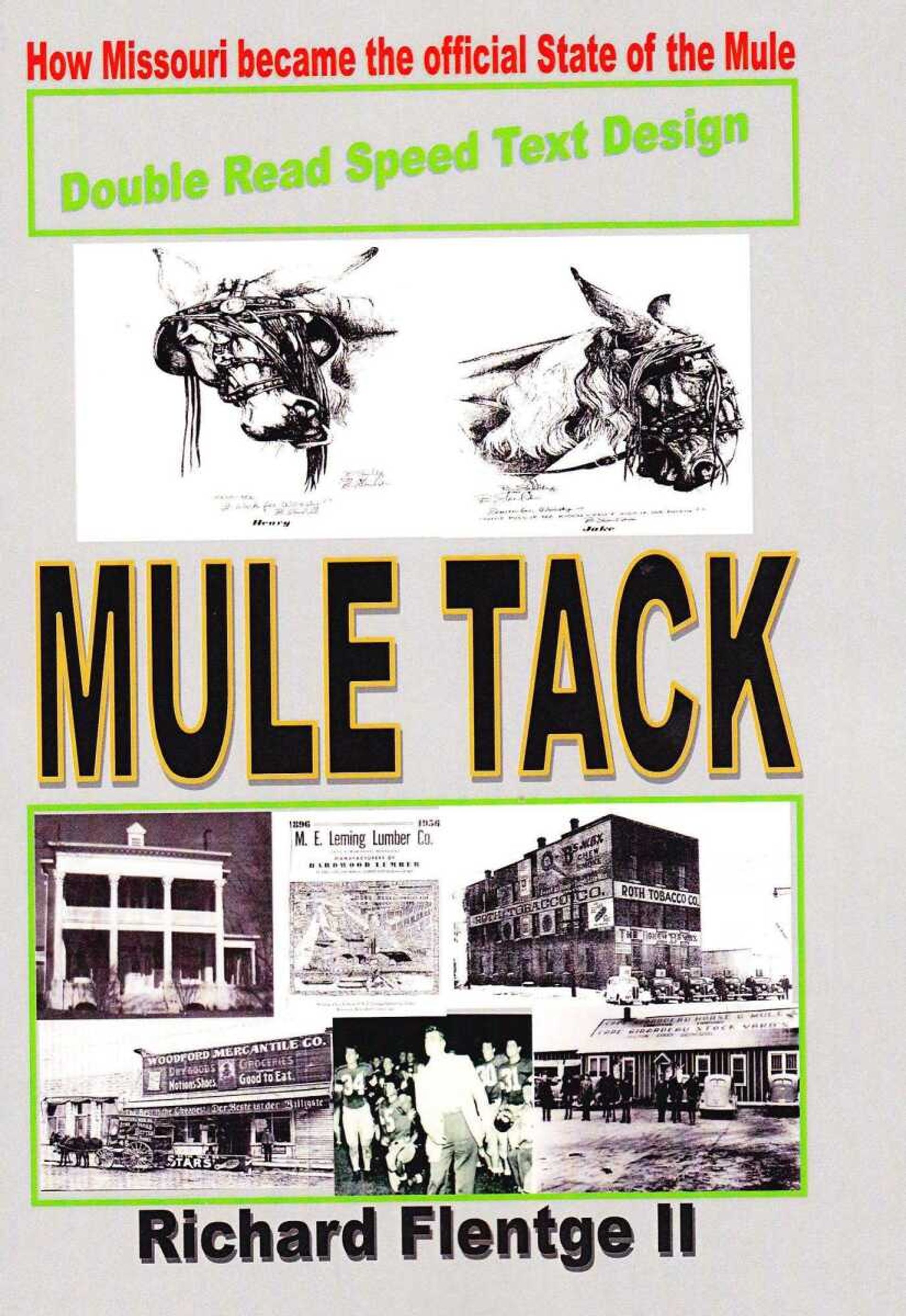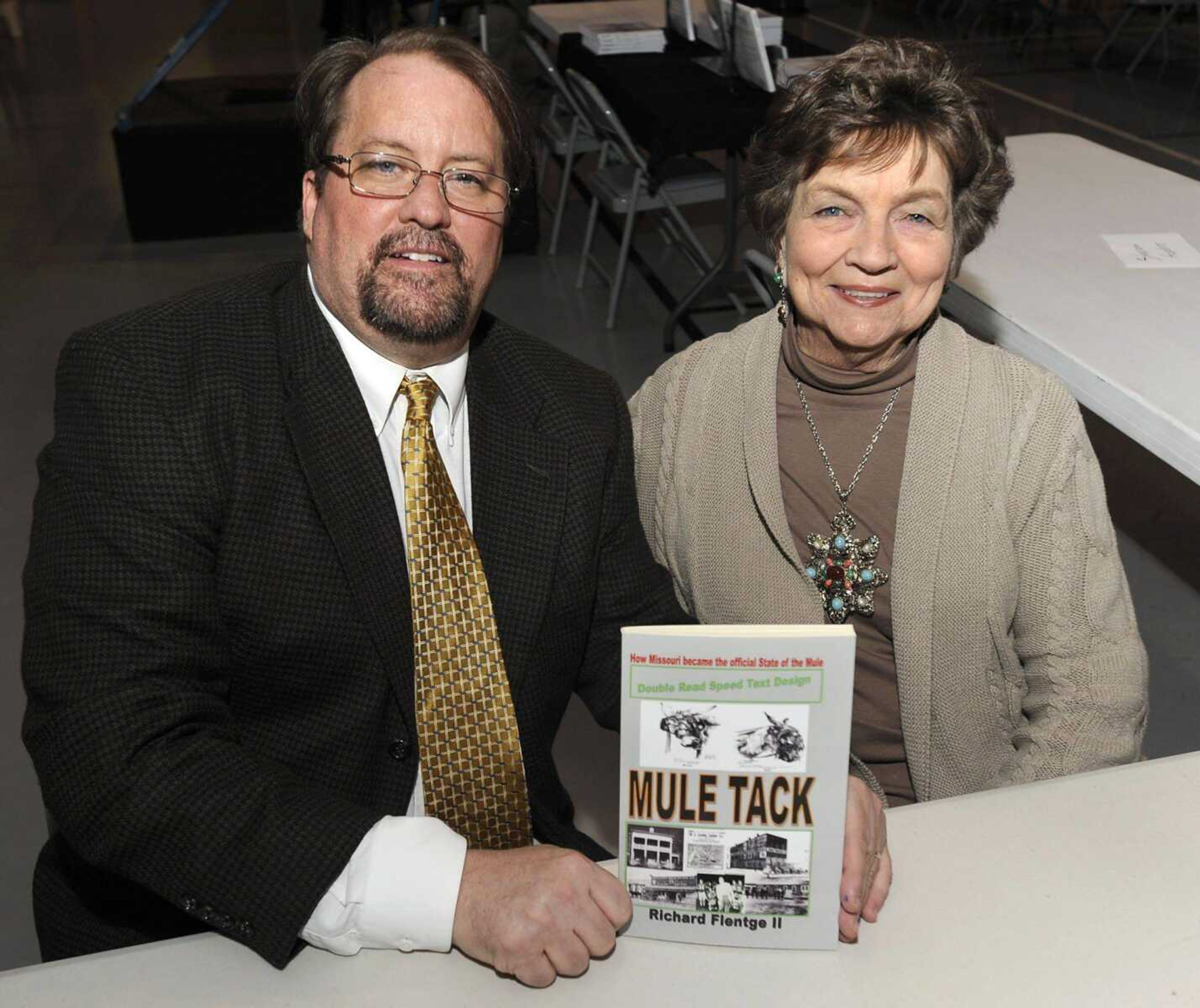~ Richard Flentge's new book describes how much of a fight it was to make the mule the official state animal
A local storyteller uses an unexpected theme to combine the many tales of Cape Girardeau and Missouri history in his new book.
It's almost impossible to tell the story of Missouri without telling the story of the mule, said Richard Flentge, Cape Girardeau native and author of the book "Mule Tack: How Missouri Became the Official State of the Mule."
In a world of technology, it's easy to forget how much the people of rural areas like Cape Girardeau depended on mules for farming and land development, explained Flentge.
In 1995, the Missouri Legislature and former governor Mel Carnahan adopted the mule as the official state animal. While it seems like a simple decision, and fitting choice for the predominantly rural state, Flentge said politics nearly prevented the animal from receiving that title.

"The essence of my story is about Charles 'Woody' Woodford and his wife Lois Woodford," he said. "They discovered that the Missouri Legislature wouldn't vote for the mule because it was too similar to the donkey, the symbol of the Democratic Party. Woody felt like that was a real injustice to the state."
Flentge said Woodford fought to bring the animal to state notoriety not because he loved mules, but because he believed it was an accurate representation of the state. According to Flentge, most Missourians believed the mule was the state animal before 1995 because it was so embedded in the state's history and identity.
In his book, Flentge outlines Woodford's 1994 statewide tour and how he garnered the support of thousands of American Legion members, who stood behind him as he argued his case for House Bill 84, known as the "mule legislation," before the House of Representatives. The bill passed and on May 31, 1995, the mule officially became Missouri's state animal.
The book remains mostly lighthearted, sharing jokes and phrases inspired by the stubbornness and heartiness of the mule, but Flentge said he also made a point to touch on heavier issues. In particular, he said he makes a few bold "sticks" at politics and the way party lines and bureaucracy can interfere with even the simplest of decisions.
"I think the story has a little bit stronger political and social revelations than people might expect," Flentge said.
The idea to combine the serious and the lighthearted came to him after he attended the Cape Girardeau Storytelling Festival in 2010. The book reads more like oratory, explained Flentge.
"The Storytelling Festival really prompted the creative process," he said. "They told these funny, humorous stories that were embedded in socially conscious issues, as well. So for this book, I really tried to use that style of professional storytelling."
Flentge also dedicated a few early chapters of the book to other famous authors and storytellers of Missouri, including Mark Twain and William Faulkner. The text is sprinkled with quotes and excerpts from short stories written by these men, who intrigued and inspired him throughout his years at Southeast Missouri State University.
When he began to gather information for his book, Flentge said he started with "just a big pile of papers" on his desk. Finally, he said he sat down to sort through the information and began writing "just like it was a term paper."
"There was a lot of working and reworking and editing," Flentge said. "But the book is very factually accurate."
Another piece of Missouri history highlighted in his story is the Oliver-Leming House in Cape Girardeau, which Flentge described as the local version of "Gone With the Wind's Tara," the story's iconic plantation home. Flentge said the house was of great historical and personal significance.
"Two acts of great citizenship were birthed in that house," he said. "First, it was the house where the first Missouri flag was made. Second, it was home of Woody's [Woodford] mother-in-law, where he launched his quest to make the mule the state animal."
Flentge also shares childhood memories of riding his bike past the house over the hilly streets of Cape Girardeau. These reflective moments provide context for many of the events in Flentge's story and were also meant to show his love of the community.
"I truly love Cape Girardeau," he said. "I have a great affection for my hometown and I wanted that to come out in the book."
While he does not have any book signings officially scheduled, Flentge said he plans to be at Hastings on William Street for a signing sometime in May. "Mule Tack" can be purchased at Hastings, amazon.com or www.newrev9online.com.
srinehart@semissourian.com
388-3641
Pertinent address:
2631 William St., Cape Girardeau, Mo.
Connect with the Southeast Missourian Newsroom:
For corrections to this story or other insights for the editor, click here. To submit a letter to the editor, click here. To learn about the Southeast Missourian’s AI Policy, click here.








